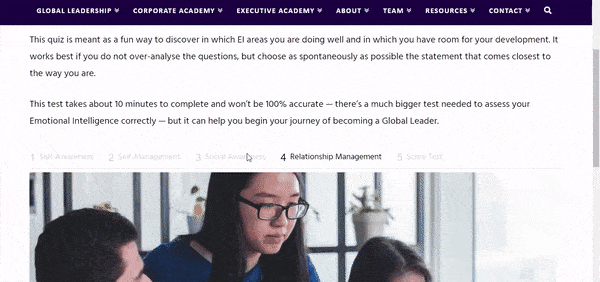Change management in any organisation is one of the most complex aspects of any business growth. When it comes to human beings, change is always a very delicate matter and modern management must tread with care whenever they want to complete iconic changes within business practice, culture and process. Change is one thing, but getting your team excited about it will be quite another.
There are a couple of approaches to choose from. You can take a harder, top-down strategy, which is inherently quite aggressive. An example of this would be to send out an email memo to managers which states that there will now be no overtime, no pay rise and no snacks in the office, which they then communicate in the Monday morning team scrum…
…bad idea.
You could take a super soft approach and try to get everybody involved and on board. Should you get rid of all the snacks, or just reduce the options? What snacks do we keep? Is the overtime really that big of a deal?
But you’ll most likely end up doing twelve company-wide surveys and drowning in a myriad of opinions whilst moving no further forward. Also, the disapproval may be overwhelming so you second guess whether to change things at all.
We’d all love to play the good cop all the time, but it’s wishful thinking. It’s a rare thing to get everybody to agree and the larger your company, the less likely this becomes. So what is the answer?
Utilizing the best of both.
Like many things, top change management experts have conceded to a mixture of the hard and the soft. Change in any organisation requires a balanced approach; the complainers will complain, regardless. But done right, you’ll get enough people excited enough to deliver the change that will take your company to another level of efficiency and profitability.

1. Identify the change and make the vision clear
Statistics show that 70% change programmes fail. The reasons for this vary from lack of resources to lack of support, but if you fail to plan, you plan to fail. Pretty self-explanatory but you’d be surprised how hard change management becomes if the directive isn’t clear at the start. Do your research and clearly identify what you want to change and why it will be best for the company and your team in the long run.
Define the vision clearly so that you can communicate clearly across all levels of the company. The time commitment matters to a degree but the main thing to focus on is deciding what the change should be and why the change should happen. Projects do tend to run over time, but this will be unbearable if the vision isn’t clear enough in the first place.
2. Define the end goal
“Change is hard at first, messy in the middle, and gorgeous at the end.” Robin Sharma
Change is good, but to what end? People need to know what the benefits will be at the end of the process otherwise the team are discouraged before they’ve even had a chance to be excited. Make sure you are clear about the results you expect from changing a whole system or upgrading to new technology. If people can see light at the end of the tunnel, they’ll walk towards it even through the hard, tedious stages of change. Be clear from the start so confusion doesn’t work its way in before the change strategy has left the meeting room.
3. Use storytelling and symbolism to get the team excited
Once you’ve decided what the change is going to be, and you’ve built a whole vision around it, it’ll be time to start the crucial part of communicating that vision to your team. Often, the best way to do this is to find a way to tell a really compelling story and pair it with a symbol that helps people remember it.
Do you know how well you are prepared for this kind of management task? Take Emotional Intelligence (EI) Test for Global Leaders:
For example, John Kotter, a professor from Harvard Business School told a story in an article about a mid-level manager who wanted to change how gloves for factory workers were purchased. Every factory purchased their own gloves which varied in quality and in price. Bulk order discounts could not be taken advantage of. This inefficient process was costing the company a lot of extra money.
To get the managers onside with the proposal to centralise the purchasing of gloves, the manager collected 424 different pairs of work gloves from across the factories and attached their prices to them. In a meeting, the gloves were dramatically dumped on the table; a visual representation of the inefficiency made the change almost indisputable. Needless to say, there was little resistance thereafter and the company saved a lot of money just by this one action.
A clear symbol, whether it’s a potent statistic or a picture of what you hope to achieve by changing a process or culture, all helps with building a compelling story and cementing why the change is important. Think long and hard about how you can use a symbol to get your team excited about a new change in the company. It really does make all the difference.

4. Get middle management involved from the start
Top level management can agree to your changes, but in many SMEs (small- and medium-sized enterprizes) and larger organisations, middle management plays a crucial role in implementing the change at a grass-roots level. Once you’ve defined the vision, it is a good idea to let the chief implementers have a look over it and potentially highlight any problems or issues you may not have thought of.
This gets them involved at a point where changes and tweaks to the overall plan can still be made. An atmosphere of collaboration makes organisational change less abrasive and more likely to succeed.
Also, you can get some intelligence about individual teams; who are the ‘influencers’ that don’t hold management positions officially, but hold sway over team morale? Could they be brought in to help and become champions and ambassadors for change? Could they give you valuable feedback?
Involving middle management where appropriate will help you deal with roadblocks early on. The atmosphere of communication will smooth the path and not leave people shocked and confused where there should be anticipation and excitement.
5. Assign tasks
The key to completing any project is to break it down into small, manageable pieces and delegate tasks according to the strengths within your team. Your team will be much more productive if they are given tasks that bring out the best in them, and you’ll be able to delegate work they can complete to a high standard.
Assigning smaller tasks to get the momentum going will keep the team focused and feeling like progress is being made. As they see their work coming together, that will boost excitement levels because they are a part of something big that will affect the company positively.
They become agents of change which creates a greater sense of responsibility and ownership.
6. Set up regular progress checkpoints
Writing down a vision makes achieving it a probability of 40%. Telling someone about it increases the probability of achieving the goal to around 65%. Physical accountability meetings will increase the probability of achieving the goal to 95%.
How’s that for incentive?
Set up regular checkpoints with your team to keep people motivated and excited to share the progress of the tasks they’ve been completing to help move the change on and keep the momentum going. If there are issues, it’s easier to iron them out and keep unnecessary delays to a minimum.
7. Deploy ambassadors (that aren’t management)
Once the change is clearly underway, get your management team to involve morale-boosting employees to do some minor work on the implementation of the strategy. If a new database system is being built to manage customer data, get the employees to test it out. If a new system for registering expenses has been built, get a couple of employees to run through the process.
If they’ve gone through it and they enjoy it, any grassroots grumblings behind closed doors that you might not be privy to can be met with genuine firsthand experience to shut down any fears or misgivings. Change champions have the power and the influence to make or break whether a change fails. You can’t please everybody, that much is clear, but you can do your best to get as many people on board as possible.

8. Get feedback via focus groups
Your change strategy has been mostly implemented at this stage. You’re almost ready to roll it out across the departments. But it’s not perfect. At this stage, while you’re adding the finishing touches, try and gather feedback to understand if there are any glaring issues before a wider rollout.
Have a chat with management and staff to hear genuine concerns and listen to any issues raised. Doing a complete about-turn isn’t necessarily likely, but you can still make some minor changes at this stage, so don’t miss out on this chance to find out vital information about how people could be coping with the change strategy.
9.Tackle resistance head-on
Sometimes, adequate communication with managers and employee ambassadors isn’t enough. A harsh case of gossip due to incomplete or incorrect information can cause a near mutiny in even the best thought-out plan. If this happens, don’t be afraid to tackle the issue head-on.
Often there is a root cause. If people are concerned about losing their jobs as a result of the change, it will naturally cause a negative reaction.
HR professionals know that sometimes this is the case. You’ll always be the bad guy to the people that lose their jobs. It’s heartbreaking but sometimes unavoidable.
In most cases though, job losses for existing team members aren’t on the cards at all. In fact, you could implement a recruitment freeze for eight months while the change is completed. New employees will then come into a new system rather than wasting time learning the old system and then having to retrain for the new.
Communicate such issues clearly while dealing with the gossip. It reassures people and assuages suspicions that could topple what you’re doing and create a feeling of mistrust between management and staff.
10. Communicate clearly any changes made as a result of feedback
Continue to make your team feel valued by referencing changes you make as a result of their suggestions. It helps to maintain collaborative morale within the team, and it helps in the final stages of your change strategy to cement and solidify the idea that you won’t be going back on the change, but the opinions within the team are still welcomed.
This way, you can maintain buy-in and excitement from the start of the change project, right through until the end of it making it a largely positive experience propelled not just by senior management but by middle management and grassroots employees as well.
Managing change as a global leader
Getting your team members or employees excited about change is difficult enough when everyone is working from the same office. For global teams, where members are working from different locations and rarely, if ever, meet in person, the above-mentioned strategies become even more important to create a sense of excitement and unity.
And it’s up to the global leaders to foster it. Find out more about global leadership on this Global Leadership Magazine, or make it even easier by signing up for our weekly news on all things Global Leadership:



